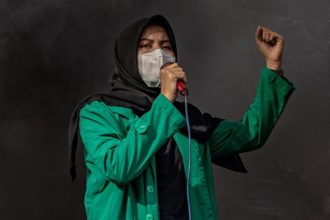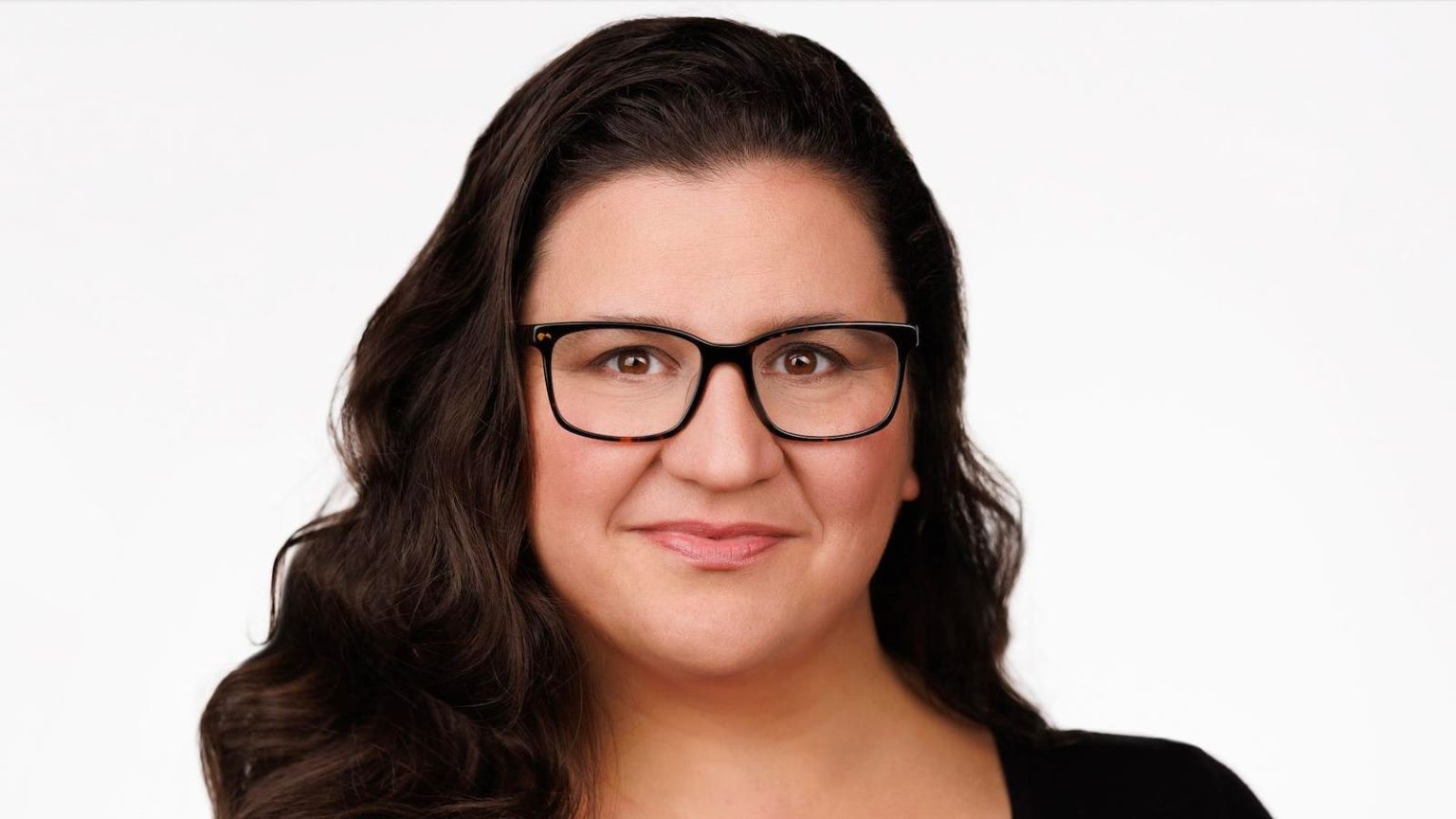From rebuilding audience trust to reimagining the way journalists cover the world, Cristi Hegranes is optimistic that the future of journalism is bright. Here, I speak with Hegranes about her new book, Byline and her vision for international journalism.
Michael Zakaras: Over the last 17 years, Global Press has created an alternative to what you refer to as “parachute journalism.” Tell us more.
Cristi Hegranes: Starting in the 90s, major legacy news organizations started closing foreign bureaus and in the last 30 years, at least 70% of foreign bureaus have closed. This has given rise to the practice of parachute journalism — that’s when journalists drop into global communities for a few days, usually in times of crisis. Thanks to parachute journalism the vast majority of international news now centers on just four topics — war, poverty, disaster, disease. That leaves people with an incomplete and inaccurate view of the world. Since 2006, Global Press has been training and employing local women journalists in some of the world’s least-covered places to cover their communities for both local and international audiences.
Zakaras: Can you share a specific story that demonstrates why the Global Press model matters?
Hegranes: In 2021, Mount Nyiragongo erupted in Goma, Democratic Republic of Congo. As you would expect, images of the volcano and people fleeing were on international news for a few days. After that, the story faded, and focus moved on to the next global crisis somewhere else. Rather than doing this kind of action-based coverage, Global Press focuses on consequence-based coverage, that means that we do long-term feature and investigative stories that help people understand events in context. Global Press reporter Noella Nirabihogo was out in the streets doing interviews and taking photos the day the volcano erupted, but her story came months later. It was about why the volcanic warning system didn’t go off. It turns out that the volcanic observatory was mostly funded by international governments and agencies, but the money was being funneled through the central government and just wasn’t reaching the observatory. On the day of the eruption the observatory didn’t even have an internet connection and so people were caught totally off guard. Noella’s reporting about the corruption and mismanagement, resulted in swift action. Today, funding to the observatory has been restored.
Zakaras: Your work at Global Press — and what you are pushing for news media broadly to do — is to put our faith in reporters like Noella.
Hegranes: Yes. We have to put power into the hands of local journalists. At Global Press, we use two crucial policies in our news-gathering. One is a non assignment policy. We trust our reporters to level up the stories that are the most important. Second, we have a majority local sourcing policy. That means that the experts that you hear from, the data that you see in our stories, they are mostly from local people and local sources. That might seem like a small detail, but it’s deeply important. Take Haiti for example — a country that international media covers almost solely as a disaster-infused place. Haitian sources tend to be victims and expert sources tend to be from American or Canadian NGOs or international agencies like the UN. The message that that sends to readers is that Haitians have little agency; Haitians are not educated; Haitians are not capable of solving their own problems — all of which are, of course, deeply inaccurate.
Zakaras: And as you say in the book, this kind of reporting creates a distorted sense of reality, whether it’s about Haiti or anywhere else. Why is this especially important now?
Hegranes: Trust in journalism, trust in media has never been lower. And one of the simple reasons that trust is so fractured in journalism is because people don’t recognize themselves in stories. So if there’s a story about your community, you read it and think, ‘Nope, that doesn’t reflect my experience.’ It then becomes really easy to begin to buy into narratives of fake news and disinformation. One of the easiest things we can do to repair trust with our readers is to give them proximate storytellers — local journalists, who have the social, historical, political, linguistic access to tell accurate stories over time so that we’re not just getting that one column twice a year that becomes, by default, the definitive narrative.
Zakaras: Part of the pushback is something to the effect of, “We’re just giving people what they want. These are the stories they read, this is what they click on,” but you’re saying that what consumers are demanding is changing.
Hegranes: Data now tells us that it’s not so much that readers don’t care about the world, it’s that they don’t care for the way the world’s stories are being told. People are fatigued by disaster and victim-centered narratives. A Global Press study found that nearly two thirds of U.S.-based news readers prefer news from local journalists rather than foreign correspondents. And a recent AP NORC survey found that what Gen Z and Millennial news readers want most is the ability to understand communities outside of their own. I have never seen audiences more activated, and I have never seen people care more deeply about who tells the story.
Zakaras: Why did you choose this moment to write Byline?
Hegranes: I have been beating this drum for 17 years now to say, “Let’s rethink parachute journalism. Let’s rethink this whole international model.” Well, Covid really did that for us because for two years very few parachute journalists were parachuting anywhere. As a result, publishers and audiences pivoted reliance to local journalists, people who were previously just treated as fixers were all of a sudden elevated to the byline — and we all benefited from that. As the pandemic waned we saw mainstream media begin to return to the parachute model, that’s why I felt such urgency to get this book out as fast as possible to say “No, no, no – we just started to get it right! Let’s not go back to the way we were doing it before.”
Zakaras: As consumers of the news who may be frustrated, what can we actually do specifically to help shape the right kind of journalism?
Hegranes: Readers have so much more power than they realize. One example I use in the book is of an NPR listener named Michael Stoller who reached out to NPR last year because he didn’t like it when NPR used the term ‘mud hut.’ The ombudsman of NPR took his complaint seriously. She looked into it and called me and some other language experts. I said, “Yes! I totally agree with him.” Why? Because it’s not a dignified term. How did we know? Because the reciprocal isn’t true. You would never refer to a white person in a suburb in the United States based on the materials they use to build their homes.
Zakaras: What are a few ways you’d like to see bigger newsrooms — like, say, the New York Times or the Guardian — do things differently in the years ahead?
Hegranes: There are many ways to make subtle shifts. Historically, legacy newsrooms have said, “Okay, we’re sending so-and-so into India or into Uganda,” or wherever it is, and when that foreign correspondent arrives, they instantly hire a fixer — generally a local journalist, a trained professional that helps the foreigner, arranges their interviews, often even helps them write the story. That person is rarely given credit. What we’re saying is: don’t send the first guy, just elevate that fixer to the byline. I think if larger news organizations can open themselves up to the power and the utility of local journalists, we’ll see a very different industry quite quickly.
Zakaras: Cristi, last question: you say that Byline is a celebration of local, wherever your local is. As you embark on a book tour across the U.S., what audiences are you excited to connect with?
Hegranes: As I travel across the country, I’m inviting incredible local nonprofit news organizations to be my conversation partners. I want to use this tour to remind U.S.-based readers that exceptional journalism is being produced in their backyards. I’m also excited to connect with donors across the country. My message to philanthropists today is this: Whatever your number one issue is, whether it’s democracy, or climate, or gender, make independent journalism your number two. Why? Because the ability to reach audiences with high-quality, ethical, accurate information is one of the best ways to really move the needle on these issues. When we all invest in independent journalism we allow people to better understand the world and their places in it.
Cristi Hegranes is an Ashoka Fellow. This interview has been condensed and edited for clarity.
Read the full article here





